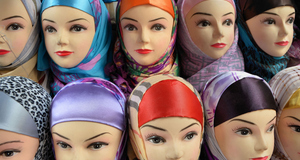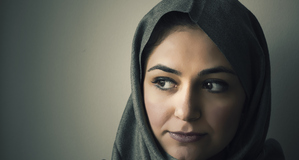Reevaluating the Role of Women in Beowulf
By
2012, Vol. 4 No. 09 | pg. 2/2 | « Furthermore, the importance of women’s roles is shown in the dichotomy between Hygd and Thryth. Hygd is heralded as being “wise-minded, distinguished/ through few winters/ Within the castle walls. . .” (wis, welþungen, þeah ðe wintra lyt under burhlocan gebiden hæbbe) and “ goodness famed, her life she lived in high-love for all mankind” (gode mære, lifgesceafta lifigende breac, hiold heahlufan wið hæleþa brego). She has made a peaceful court and country with her political presence, which is in contrast to Thryth who displays ne bið swylc cwénlic þéaw
idese tó efnanne þéah ðe hío aénlicu sý· þætte freoðuwebbe féores onsaéce Such queenly habit Is not for a woman to perform, though she be matchless That peace-weaver far denies life. In a world where the survival of kin is paramount, one who produces discord can unravel a stable society while a peace-weaver woman can strengthen ties between communities. Yet the Hygd is also shown as holding power when she delivers the kingdom of the Gears to Beowulf: “There Hygd bade him hoard and kingdom, ring and throne; she did not trust in her child with the ancestral seat to keep steadfast when Hygelac was dead.” (þær him Hygd gebead hord ond rice, beagas ond bregostol; bearne ne truwode, þæt he wið ælfylcum eþelstolas healdan cuðe, ða wæs Hygelac dead). Doubting her own son’s ability, she offers the position to Beowulf of her own volition in order to keep her kin safe. In Beowulf, Wealtheow and Hygd exemplify this ideal of woman as a relative equal to men, a peace-maker, and a wise leader. This ideal is contrasted with the presence of Grendel’s mother and Thryth. These women exert physical strength and violence over less aggressive means. They are hostile, do not welcome guests, and use irrational violence in order to settle disputes. Thryth is presented as a princess who used to kill the men who came into her hall and it is commented that this is unacceptable, even by someone who is beautiful. Grendel’s mother also attacks without discrimination, as she does with Beowulf. Yet there is a difference between the two women in that Thryth is connected through lineage and Grendel’s mother is not. Thryth is the daughter of a king; she has social status, and can change through the influence of society via her marriage: “famous for good things, used well her life while she had it, held high love with that chief of heroes. . .” (lifgesceafta lifgende breac, hiold heahlufan wið hæleþa brego). Unlike Thryth, Grendel’s mother is much more dangerous because she functions outside of society, so terrorizing the warriors when she enters the hall that they do not even don their armor before taking up their weapons. Her lack of lineage and loyalty is fearsome because she seeks to disrupt the ability for the society to thrive.But it is not just Grendel’s mother’s otherness that causes Hrothgar’s unease, it is also her refusal to follow even the basic societal expectations, the wergild (lit. man-gold), or vengeance, in this case. The wergild existed as a form of reparation for killing. In the Laws of Aethelbert, the wergild is a way for which a sense of justice can exist without further bloodshed. If one has killed another member of society, then they would have to pay a certain amount of money depending on the status of the victim and after the kinsman are paid the accused is then considered to have done what is proper. Knowing this, we can then look to how Grendel and his mother are described as having “no settling of money:/ Nor did any counselor have hope to expect noble reparation from the killer’s hands” (fea þingian, ne þær nænig witena wenan þorfte beorhtre bote to banan folmum). What makes the villains so terrible is their indiscriminate killing without reason and reparation. It is clear that there is a great weight placed on human life and even the most antagonistic member of society would still be expected to function and perform their part within the community. Life was not taken lightly, and someone who died before their time was grieved for. Thus, Grendel’s mother’s attack on Hrothgar’s hall is her attempt to gain retribution for Beowulf killing her son, albeit in an immoral way: Grendeles modor, Grendel’s mother, She then takes the man, Hrothgar’s counselor, with her “In her fiendish embrace under the mountain-stream./That was for Hrothgar the most grievous of the afflictions/ The leader of the folk had long attained” (leofne mannan; hio þæt lic ætbær feondes fæðmum under firgenstream. Þæt wæs Hroðgare hreowa tornost þara þe leodfruman lange begeate). When this is compared to the way in which Beowulf enacts the wergild, he is seen as first answering the call of Hrothgar and indulging the lord so that he might kill the beast. In Beowulf’s actions there is a sense of some small justice that he has come to the land in order to create peace due to the years the land has suffered, but Grendel is indiscriminate, much like Grendel’s mother, and kills for the sake of it. Beowulf, on the other hand, kills the two in order to restore balance to Hrothgar. It is in Grendel’s mother’s failure to adhere to the proper wergild law that makes her a threat to the society, not her gender, which makes her a beast. Furthermore, it appears that only more modern versions of Beowulf depict them as monsters as the original text relates to us that they are only fiends and vengeance-ridden people. Like animals, they are given no voice in the tale because they have long since lost their societal right to speak as one’s voice is directly connected to how much power they have. They are killing without reason in a culture that values life and it is their exile that makes them beast-like, not their physical appearance. The women in Beowulf are the representatives of an Anglo-Saxon culture that put value upon all members of the community regardless of gender. As the revaluation shows, the perspective that the men have of the women is especially favorable and not at all as dominant as would be believed. It is thus that a reading of Beowulf should warrant a contextual judgment with regards to the role of women rather than relying solely on the liberal modern adaptations. ReferencesKlaeber, F. (2008). Klaeber’s Beowulf. Ed. Fulk, R.D., Bjork, Robert, and Niles, John.Boston. New York: Heath & Co Oliver, Lisi. (2002). The Laws of Aethelbert. The Beginnings of English Law. Toronto: University of Toronto Press. Ringer, Dick.(2005). Beowulf: A New Translation for Oral Delivery. Madison: University of Wisconsin-Madison. Web.2 Jan 2012. > 1.) All Old English quotes are taken from F. Kraeber, Klaeber’s Beowulf, edited by Fulk, R.D., Bjork, Robert, and Niles, John (2008) and all Modern English translations by the author. 2.) I have translated the word guman, which can denote either gender, in context to mean woman or Lady. 3.) Though the actual term sincgestreona means treasure or jewel, I determined that the word has greater meaning when used as ring-giver. Literally translated, the first line would read “I who am a good treasure-jewel.” Wealtheow is proclaiming her position within the society as a giver of gifts and of her power as a consort and, given the context, ring-giver is an appropriate translation 4.) The fact that Beowulf specifically uses the words þeah seo bryd duge! indicates the high respect that he has for the peace-weavers. 5.) Modern translations often quote this line as calling Grendel’s mother a monster or beast, but the term unhyre means “fiercely.” Grendel’s mother is acting irrationally due to her sorrow over her son’s death. Suggested Reading from Inquiries Journal
Inquiries Journal provides undergraduate and graduate students around the world a platform for the wide dissemination of academic work over a range of core disciplines. Representing the work of students from hundreds of institutions around the globe, Inquiries Journal's large database of academic articles is completely free. Learn more | Blog | Submit Latest in Literature |














